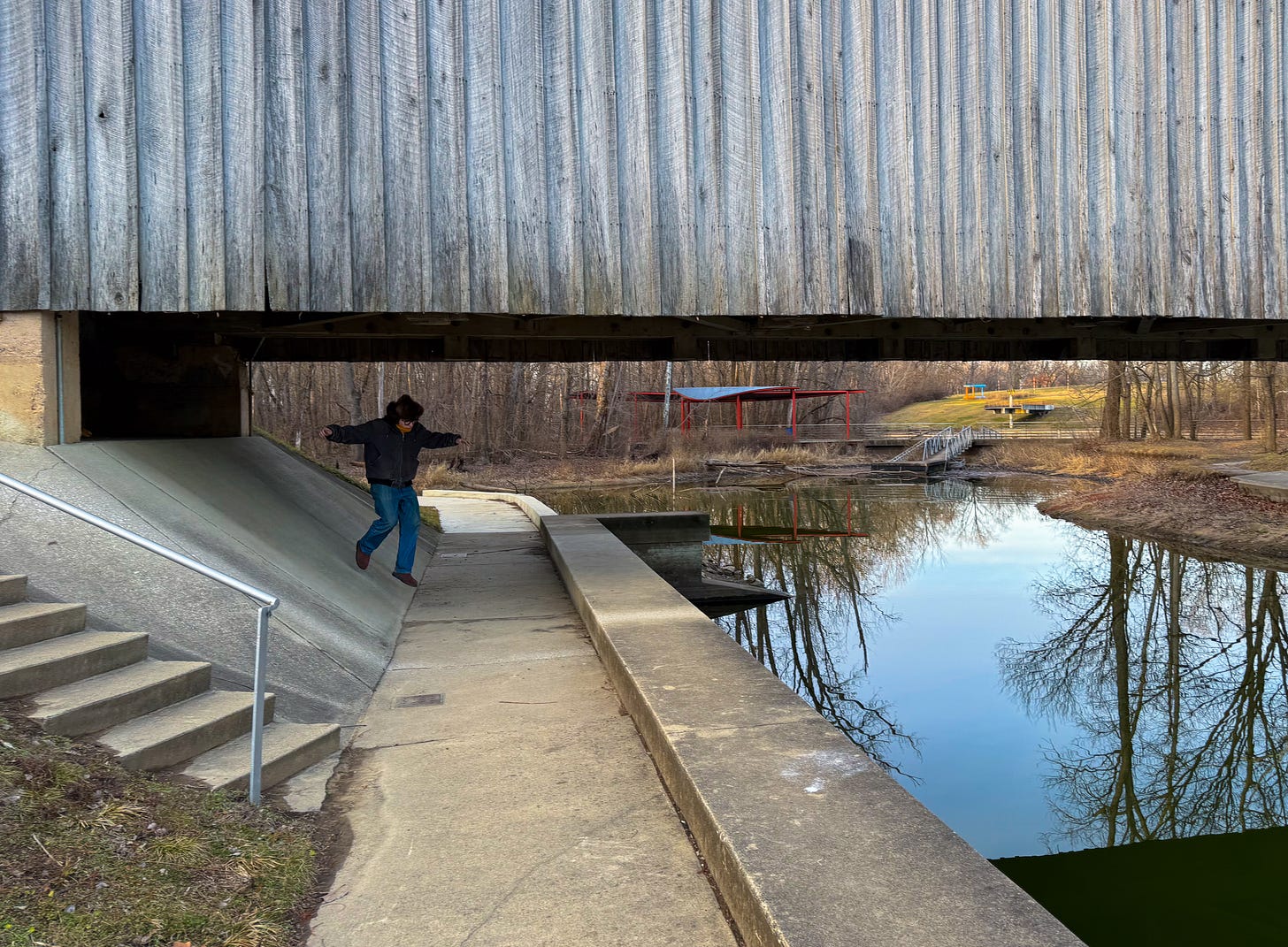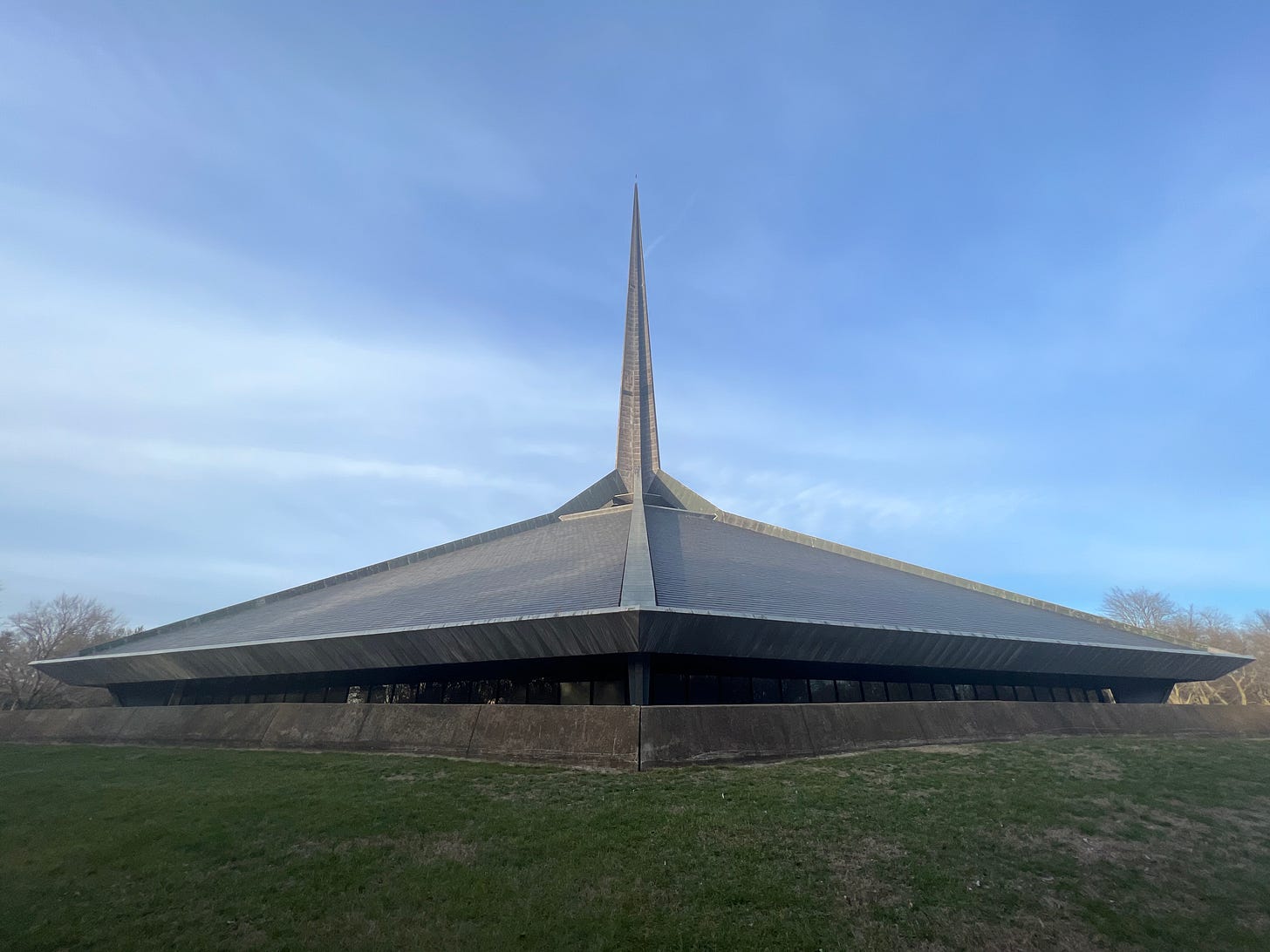Winter in the Midwestern United states can be dreary and cold. Desperate for something to do during winter break (and for a new article idea), I jumped in a car with a few friends and took a day trip to Columbus, Indiana.
You might think it strange to spend a combined 5 hours in the car to visit a city of just over 50 thousand people, but Columbus, my friends would agree, was more than worth the travel time.
Like many others, I was first made aware of the place after watching the 2017 film Columbus, named after and set in this odd town forty miles south of Indianapolis. The movie is a semi-romance about an architecture-obsessed twenty-something, her unlikely friend, and the breathtaking built environment of her hometown.
Columbus is far from your typical mid-to-small-size North American city. It’s home to dozens of striking modernist buildings, and it’s a destination for many traveling architects seeking inspiration from world-renowned designers. According to Cleveland.com, Columbus was ranked the sixth most architecturally important city in the U.S. by the American Institute of Architects.
But how did this happen? Why this town in southern Indiana, of all places?
J. Irwin Miller, born in Columbus in 1909, was a wealthy industrialist who ran the Cummins Corporation, a large steel and automotive manufacturing company.
In 1957 he established the Cummins Foundation and offered funding to the city of Columbus to pay all architecture fees for the design of new public buildings. As a result, there are dozens of captivating projects throughout the city limits.
It’s Miller’s focus on public buildings that I want to emphasize here. Designer buildings come with a designer price tag, and as a result, grand architecture is frequently behind a paywall, inaccessible to the broader public. Columbus, through its masterfully designed Third Places, encourages residents to engage with art, and more importantly, with one another.
I’ve written in the past about the importance of third places for community-building.
Originally defined by sociologist Ray Oldenburg, Third Places are the spaces we spend time in outside of work and home.
…They are the physical spaces where we interact with friends, strangers, and acquaintances. Communities need common spaces in order to build common ground with one another.
The Bartholomew County Public Library, Mill Race Park, Irwin Conference Center, and the “kidscommons” Community Children’s Museum are phenomenal examples of Third Places, all with incredible designs, and all within walking distance from one another! Even in the winter, Columbus’ downtown is surprisingly active with foot traffic for a city of its size, demonstrating the truth in, “if you build it, they will come.” Well-funded public amenities lead residents to actively participate in their local community, and it certainly doesn’t hurt that they’ve all got funky modern design.
It’s not just municipal buildings with funky designs, though. There’s another type of Third Place in Columbus that is sure to catch your eye.
For much of history, the greatest provider of third places has been religious institutions. Places of worship existed to provide space for congregation and the resources for a religious community to grow.
Columbus has more than a couple fascinating looking churches, partially because of
J. Irwin Miller’s Christian background. In addition to his work in manufacturing, Miller served as the first president of the National Council of Churches. Miller’s progressive ideals for the church went deeper than architectural representation, too. His work with the NCC focused largely on promoting religious support for progressive civil rights legislation in the 1960s.
Persistent support for progressive design in public gathering spaces has made Columbus a city in a category all on its own. While similar steel manufacturing towns in the “rust belt” have seen large declines in economy and population since the 1970s, Columbus doesn’t share the same fate. It’s a shining example that financial investment in community services and infrastructure will make cities and towns of all sizes thrive socially and economically.
In some ways, Columbus feels otherworldly. Driving south into the city, out of the car window you see cornfields, cornfields, cornfields, and then BAM– the bright red Robert N. Stewart suspension bridge shoots you into a downtown alive with pedestrians and filled with aspirational, eye-catching, sometimes funky looking buildings that are rarely seen in a town this size.
The story of Columbus, Indiana should be known by anyone interested in architecture, philanthropy, or community activism. There are few arguments for municipal investment in the arts quite as convincing, or aesthetically palpable, as this.
If you have the opportunity to visit Columbus, I highly recommend you do so. Until then, check out the movie, tell your friends about it, and visit your local library.











Added it to my Cincinnati itinerary next weekend - very curious to see it now!
feeling jealous cuz the library was closed when I went :/